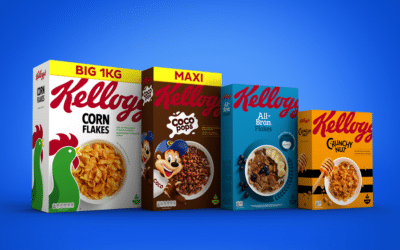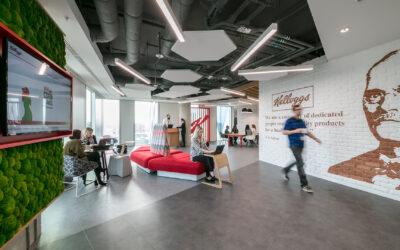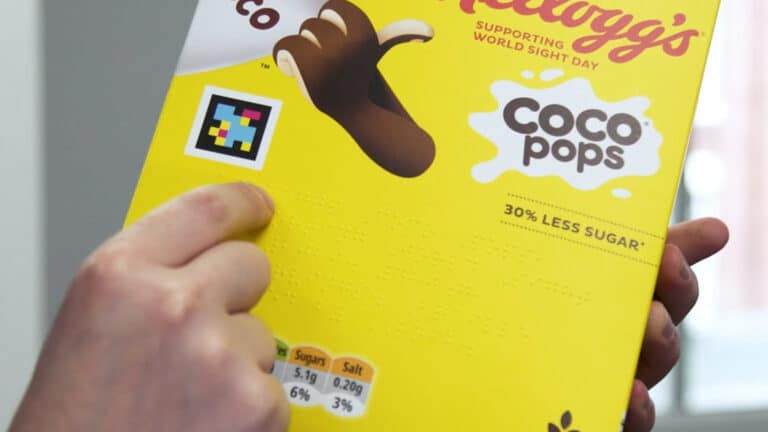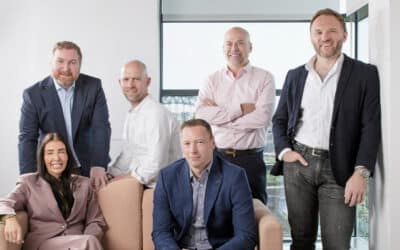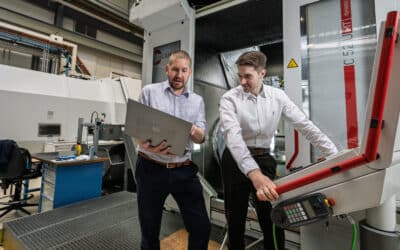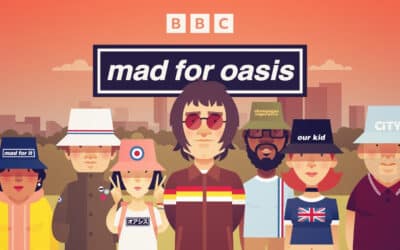Kellogg’s has introduced new technology on its cereal boxes, to help people who are blind and partially sighted
From 2022, it will add codes to the packaging, which users can scan with their smart devices to find information such as allergens.
Unlike other types of printed codes, the new technology, called NaviLens, includes high contrasting coloured squares on a black background. People don’t need to know exactly where the code is located to scan it, instead the smartphones can pick up the on-pack code from a distance of up to 3 metres.
This then alerts the person, who can have the ingredients, allergen and recycling information read aloud to them.
“Over two million people in the UK live with sight loss and are unable to simply read the information on our cereal boxes. As a company focused on equity, diversity and inclusion we believe that everyone should be able to access important and useful information about the food that we sell,” explained Chris Silcock, Head of Kellogg’s UK.
“That’s why, starting next year, we are adding new technology to all of our cereal boxes. I am proud that Kellogg’s will be the first company in the world to use NaviLens on packaging. We know it’s important that all packaging is accessible for the blind community to enable them to make shopping easier, so we will share our experience with other brands who want to learn more.”
The idea came after a meeting between staff and children from St Vincent’s, a specialist school in Liverpool for children with sensory impairment. It was the pupil’s insight that inspired the business to look for solutions.
NaviLens was then trialed in partnership with Co-op on Coco Pops boxes. An evaluation by the Royal National Institute of Blind People, showed that 97% of participants agreed that they would like to have more of the accessibility features on grocery packaging
“The incorporation of the NaviLens codes onto food packaging is a positive step towards a more inclusive and accessible shopping experience for the visually impaired. This allows people with sight loss to shop more independently and make their own food choices,” added Javier Pita, CEO of NaviLens.

